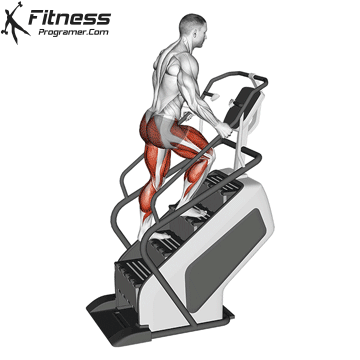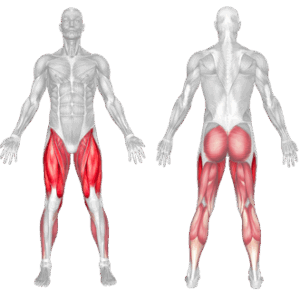Overview
The stepmill is a cardio machine that mimics walking upstairs on a continuously rotating staircase. It provides a highly effective low-impact workout that strengthens the legs and glutes, boosts cardiovascular health, and supports weight management. Compared to treadmills or ellipticals, the stepmill increases vertical loading, making it a more challenging form of walking.
How to do perform Walking on Stepmill

Step carefully onto the machine, starting with the lowest speed setting.
Hold the handrails lightly for balance, keeping an upright posture.
Climb step by step, driving through the heels and engaging your glutes.
Focus on controlled movement, avoiding short or rushed steps.
Increase speed or duration gradually based on your fitness level and goals.
Cool down by decreasing speed for the final 2–3 minutes before stepping off safely.
Tips for Proper Form
Maintain an upright torso, avoid leaning too far forward.
Use the rails lightly, not to support your weight.
Step fully onto each stair, driving through your entire foot.
Engage your core to stabilize your body.
Keep a consistent rhythm, don’t rush or skip steps.
Common Mistakes
Leaning on the handrails, which reduces lower-body engagement.
Taking shallow steps, limiting muscle activation.
Looking down, which disrupts posture and balance.
Climbing too fast, sacrificing form and safety.
Skipping the warm-up or cooldown, increasing injury risk.
Benefits of Walking on the Stepmill
Builds Lower Body Strength: Targets glutes, quads, and hamstrings with each upward step for muscular endurance and tone.
High Calorie Burn: The vertical movement demands more energy, making it excellent for fat loss and conditioning.
Improves Cardiovascular Endurance: Challenges heart and lungs, enhancing aerobic and anaerobic fitness.
Low-Impact on Joints: Provides an intense workout without the pounding impact of running.
Enhances Functional Fitness: Mimics daily activities like stair climbing, improving real-world strength and coordination.
Scalable Intensity: Easily adjusted by speed or workout duration for beginners to advanced athletes.
Strengthens Posterior Chain: Activates glutes and hamstrings more than flat-surface walking or cycling.
How to Incorporate Into Your Routine
- For Beginners: Walk for 5–10 minutes at a slow pace, focusing on coordination and form.
- For Fat Loss: Perform 20–30 minutes at moderate intensity 3–5 times per week.
- For Strength Endurance: Use intervals of 1 minute fast, 1 minute slow for 20 minutes.
- For Functional Training: Pair with bodyweight exercises like squats and lunges for movement prep.
- For Circuit Training: Add 5-minute stepmill sessions between strength rounds to keep heart rate elevated.
- For General Fitness: Walk for 15–20 minutes post-lifting as a conditioning finisher.
- For Athletic Conditioning: Incorporate weighted vest or HIIT-style intervals to simulate sport demands.
Muscles Worked

Frequently Asked Questions
Is the stepmill better than the treadmill for fat loss?
It can be. The vertical stepping motion typically burns more calories in less time due to increased muscular effort.
Can beginners use the stepmill?
Yes, but it’s more intense than walking on flat surfaces. Start slowly and focus on form.
Does the stepmill build muscle?
It tones and strengthens lower-body muscles, especially glutes and thighs, through constant resistance.
Should I hold onto the handrails?
Only lightly for balance. Avoid leaning on them as it reduces workout effectiveness.
How often should I use the stepmill?
2–4 sessions per week is effective for cardiovascular and muscular conditioning without overuse.
